Archivo de noticias y eventos
401 - 450 de un total de 2378
También puede acceder a la lista de noticias publicadas en los medios relacionadas con el Instituto de Astrofísica de Andalucía - CSIC.
Pages

|
14/07/2022 - 12:30
A journey into the Perseus cluster of galaxies The central black hole of active galaxies accretes large amounts of matter and powers jets of relativistic particles that can propagate beyond the host galaxy. Radio galaxies are particularly bright at ∼ GHz frequencies, when the accelerated electrons interact with the magnetic field and produce strong synchrotron emission. Such galaxies residing in clusters evolve in a hot, diffuse, X-ray emitting plasma (the intracluster medium, ICM) which is... Dr. Marie-Lou Gendron-Marsolais |

|
26/04/2022 - 12:30
Destroying Planetary Systems Modern astronomy invests a large amount of effort to search and characterise planetary systems around solar-like stars. In particular, at early stages of their formations in proto-planetary disks. However, we barely know much about the capacities of the planets to survive the harsh environments produced by their host stars during their evolution. In this talk, I will describe the effects a planet can produce by helping shape the mass loss of... Dr. Jesús Toala |

|
21/03/2022
Contrapuntos - Enrique Pérez Montero |

|
24/03/2022 - 12:30
Is it possible to simulate time machines in a laboratory? General Relativity is the most succesful theory we have for describing gravitational phenomena. Its range of applicability is vast: from solar system scales to cosmological scales. It is well-known that GR allows the existence of time machines: devices that are able to generate Closed-Timelike-Curves (CTCs). Although these kind of objects are allowed in GR, most researchers believe that they cannot occur on macroscopic scales. However, it is... Gerardo Garcia |
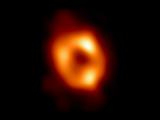
|
20/05/2022 - 11:30
Imaging the supermassive black hole at the galactic center with the EHT We present the first Event Horizon Telescope (EHT) observations of Sagittarius A* (Sgr A*), the Galactic center source associated with a supermassive black hole. These observations were conducted in 2017 using a global interferometric array of eight telescopes operating at a wavelength of λ = 1.3 mm. The EHT data resolve a compact emission region with intrahour variability. A variety of imaging and modeling analyses all support an image that... José Luis Gómez, Rocco Lico, Guang-Yao Zhao, Ilje Cho, Antonio Fuentes, y Thalia Traianou |

|
11/05/2022 - 12:30
SO Coloquio: Stellar clustering connecting the formation and evolution of galaxies to the formation and evolution of us The clustered nature of star formation leaves a long-term imprint on galaxies, stars, and planets. At young ages, stellar clustering subdivides galaxies into individual building blocks undergoing vigorous, feedback-driven life cycles that vary with the galactic environment. These units structure the interstellar medium spatially, dynamically and chemically, and collectively define how galaxies form stars. At old ages, the relics of clustered... Dr. Diederik Kruijssen |

|
12/05/2022 - 12:30
SO Coloquio: The cloud-scale baryon cycle across the nearby galaxy population The cycling of matter in galaxies between molecular clouds, stars and feedback is a major driver of galaxy evolution. However, it remains a major challenge to derive a theory of how galaxies turn their gas into stars and how stellar feedback affects the subsequent star formation on the cloud scale, as a function of the galactic environment. Star formation in galaxies is expected to be highly dependent on the galactic structure and dynamics,... Dr. Mélanie Chevance |

|
19/05/2022 - 12:30
SO Webloquio: Charting the first billion years of our Universe with the Square Kilometre Array The first billion years witnessed the dawn of the first galaxies, eventually culminating in the final phase change of our Universe: the Epoch of Reionization (EoR). Recent observations allowed us limited glimpses into these epochs, improving our understanding of the timing of the EoR. However, we still do not understand the first galaxies and black holes, the vast majority of which are too faint to be seen directly in the foreseeable future.... Dr. Andrei Mesinger |

|
07/04/2022 - 13:00
SO Webloquio: Measuring the Magnetic Fields of Exoplanets with Star-Planet Interactions Planets interact with their host stars through gravity, radiation and magnetic fields. For giant planets orbiting stars within ~20 stellar radii (=0.1 AU for a Sun-like star), magnetic star-planet interactions (SPI) are observable at a range of wavelengths with a variety of photometric, spectroscopic and spectropolarimetric techniques. At such close distances, planets orbit within the sub-alfvénic radius of the star, where magnetic interactions... Dr. Evgenya Shkolnik |
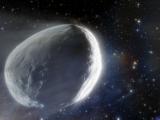
|
14/03/2022
Confirman que Bernardelli-Bernstein es el mayor cometa del Sistema Solar El Instituto de Astrofísica de Andalucía (IAA-CSIC) participa en el estudio con el radiotelescopio ALMA (Chile) del cometa C/2014 UN271 Bernardinelli-Bernstein, que ha permitido determinar su tamaño y su albedo, o reflectividad superficial. Con unos 137 kilómetros, es el mayor cometa conocido, y quizá uno de los más prístinos. |

|
14/03/2022
Premios para nuestras compañeras Pepa Masegosa y Yolanda Jiménez El Ayuntamiento de Almería y el de El Puerto de Santa María conceden respectivos premios a Josefa Masegoda y Yolanda Jiménez por su trayectoria científica. |
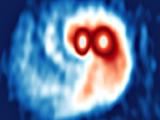
|
10/03/2022
Observan el inicio de la gestación de planetas en un sistema binario de estrellas El Instituto de Astrofísica de Andalucía (IAA-CSIC) encabeza el estudio de la estrella binaria SVS 13, aún en su fase embrionaria. Se ha observado en detalle cómo se reparte el material primigenio que puede dar lugar a tres sistemas planetarios, uno alrededor de cada estrella y otro común, alrededor de ambas |
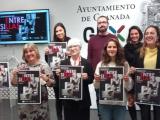
|
09/03/2022
"Entre sillas": seis voces femeninas para analizar la situación de la mujer en distintos ámbitos La actividad, organizada por el Ayuntamiento de Granada y el Instituto de Astrofísica de Andalucía, tendrá lugar el 10 de marzo a las 20.30 horas en el Teatro del Zaidín Isidro Olgoso dentro de las actividades organizadas por el Día Internacional de las Mujeres. |

|
20/04/2022 - 12:30
Turning Trash into Treasure: How OH megamasers are contaminating next-generation HI surveys and what they can tell us about galaxy evolution OH megamasers (OHMs) are rare, luminous masers found in (ultra-)luminous infrared galaxies ([U]LIRGs). The dominant OH masing line at 1667 MHz can spoof the 1420 MHz neutral hydrogen (HI) line in untargeted HI emission line surveys. This ambiguity creates a potential source of “contamination” in HI surveys, particularly for next-generation surveys that will reach groundbreaking sensitivities and redshifts. In this talk, I will present... Dr. Hayley Roberts |

|
31/03/2022 - 12:30
How the intracluster light is going to change your life! There are a huge number of astrophysical phenomena that remain barely studied due to the lack of large, multiwavelength and deep optical surveys. This is the Universe with the lowest density of stars, largely unseen by past large field surveys like the Sloan Digital Sky Survey (SDSS). For instance, only a handful of galaxy clusters have been observed with enough depth to witness the intracluster light (ICL), made up of stars that drift freely... Dr. Mireia Montes |
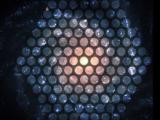
|
04/03/2022
Los primeros resultados del proyecto MASCOT sugieren que las galaxias se “apagan” de dentro afuera El Instituto de Astrofísica de Andalucía (IAA-CSIC) participa en MASCOT, un estudio a gran escala del gas frío en las galaxias, un elemento esencial para entender cómo funciona la evolución galáctica |
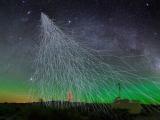
|
22/02/2022
El 14º Maratón de Astropartículas aterriza en La Palma El 14º Maratón de Astropartículas aterriza en La Palma |

|
28/04/2022 - 12:30
SO Webloquio: When artificial intelligence meets astronomy: celestial object census Over the centuries, astronomers have continued to improve the performance of telescopes and the techniques for observing and analysing data. Nowadays, humans are building more and more advanced telescopes with larger and deeper observations, reaching terabytes and even petabytes of data. The Square Kilometre Array (SKA) radio telescope, the most ambitious project in astronomy under construction, is expected to produce more than 700 petabytes of... Dr. An Tao |

|
21/04/2022 - 12:30
SO Coloquio: Constraints on the origin of free-floating planets from the mass function The stellar mass function is a fundamental parameter to constrain star formation models. Although the stellar content has been extensively studied since Salpeter's first work in 1955, the study of the planetary mass regime is only now becoming feasible. I will present a recent census of the Upper Scorpius and Ophiuchus star- forming region, where we identified between 70 and 170 free- floating planets. This is by far the largest sample of... Dra. Núria Miret Roig |
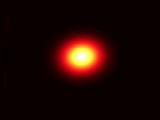
|
22/02/2022
Vislumbran la estructura del agujero negro supermasivo del centro de nuestra galaxia El IAA-CSIC encabeza un trabajo que revela la forma casi circular de Sagitario A* (Sgr A*), el agujero negro supermasivo situado en el centro de la Vía Láctea. La forma indica que el eje de rotación del flujo de materia que rodea al agujero negro (o un posible chorro) puede estar apuntando hacia la Tierra |

|
14/02/2022
Los púlsares podrían esconder una de las claves para comprender cómo viajan los rayos cósmicos El Instituto de Astrofísica de Andalucía (IAA-CSIC) encabeza un trabajo que analiza el papel de los halos de rayos gamma en torno a los púlsares para comprender cómo se desplazan los rayos cósmicos |
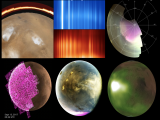
|
17/03/2022 - 12:30
Surprises from MAVEN at Mars: Aurora, meteor showers, and a new water loss paradigm The Mars Atmosphere and Volatile EvolutioN (MAVEN) spacecraft carries the Imaging Ultraviolet Spectrograph (IUVS) to study the Mars atmosphere and atmospheric escape. After more than two Mars years in orbit, IUVS has gained new insights on key phenomena at Mars including dayglow, nightglow, aurora, meteor showers, clouds, solar-planetary interactions and atmospheric evolution. In this presentation, I will highlight three key results... Dr. Nick Schneider |

|
09/02/2022
Contrapuntos - Pepa Masegosa |

|
08/02/2022
Día Internacional de la Mujer y la Niña en la Ciencia 2022 El Instituto de Astrofísica de Andalucía se suma a la celebración del Día Internacional de la Mujer y la Niña en la Ciencia, que busca visibilizar la labor científica de las mujeres y fomentar las vocaciones en las niñas |

|
02/06/2022 - 12:30
SO Coloquio: The Antikythera Mechanism and the Mechanical Universe The Antikythera Mechanism. An astronomical calculator and display device found in a first century BCE shipwreck, it is mechanically more sophisticated than anything known from the subsequent millennium. I want to argue that we should be showing admiration rather than amazement, and that the Mechanism fits rather well into its historic context. But this fit has major implications for the development of humanity’s view of the Universe. Prof. Michael G. Edmunds |
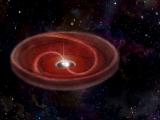
|
23/06/2022 - 12:30
Disks around evolved binaries: do they form second-generation planets? Most of the planets are formed around young stars. But can they also form around dying stars? The origin of the diversity and complexity of the detected exoplanetary systems stems from how they form in protoplanetary disks. These disks are intensively studied around young stars thanks to the high-angular resolution provided by recent instruments (VLT, ALMA). However, similar disks are also found around evolved stars, namely post-AGB binaries,... Dr. Jacques Kluska |
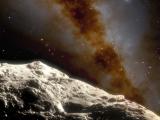
|
01/02/2022
Detectan el segundo asteroide troyano alrededor de la Tierra Los troyanos son asteroides que comparten órbita con un planeta en torno a sus puntos estables de Lagrange, situados sesenta grados por delante y detrás del planeta en su órbita. Muy estudiados en otros planetas, como Júpiter, que cuenta con varios miles, hasta ahora solo se había hallado uno alrededor de la Tierra |

|
21/03/2022 - 01/04/2022
PySnacks for beginners Online |

|
19/01/2022
La imagen con mayor resolución de la galaxia OJ 287 sugiere que alberga un agujero negro supermasivo binario El Instituto de Astrofísica de Andalucía (IAA-CSIC) encabeza un trabajo que combina observaciones de radiotelescopios en tierra y en el espacio para estudiar las regiones centrales de la galaxia OJ 287 |
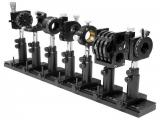
|
07/02/2022 - 18/02/2022
SO Instrumentation School IX. Opto-mechanical systems and mechanical design of IR instrumentation Granada |

|
17/01/2022
La exposición AstrónomAs llega a Granada Desde hoy hasta finales de mes permanecerá instalada en el patio del Ayuntamiento de Granada, de donde se trasladará al Parque de las Ciencias de Granada. |
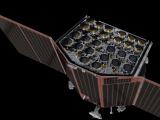
|
17/01/2022
Luz verde a la siguiente fase de la misión PLATO El pasado 11 de enero la misión PLATO de la Agencia Espacial Europea (ESA), en la que el participa el Instituto de Astrofísica de Andalucía, recibía luz verde para continuar con su desarrollo tras superar con éxito la revisión de hitos críticos |

|
25/01/2022 - 12:30
Cosmological QUOKKAS: Proof of concept and early results on the Hubble Constant tension Distances are one of the most important yet difficult to get quantities in astronomy. Normally, astronomers use redshifts (which are relatively easy to measure) as distance measure, but this only works if one assumes that there is a relationship between redshift and distance. The relationship between redshift and distance was first observationally verified in the 1920s by Edwin Hubble. He found that the further away a galaxy was, the galaxy... Dr. Jeff Hodgson |
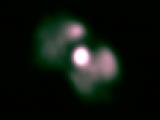
|
13/01/2022
El reencuentro con una nebulosa planetaria 30 años después revela cambios y una posible estrella compañera El Instituto de Astrofísica de Andalucía (IAA-CSIC) encabeza una investigación con datos del Observatorio de Calar Alto (CAHA) que muestran variabilidades en la nebulosa planetaria IC4997 |
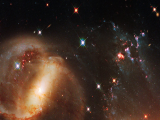
|
23/05/2022 - 27/05/2022
IAA-CSIC Severo Ochoa Advanced School on Galaxy Evolution Granada |

|
20/01/2022 - 12:30
Astronomy for attaining sustainable development goals in Africa Education and its contribution to science, technology, and innovation are the key points for combating poverty in the long term. Education is also a key point for empowering girls and women, which is fundamental for achieving the United Nations Sustainable Development Goals (SDGs). Astronomy is a powerful tool to promote education and science but, in addition to that, it is also one of the leading sciences for bringing strong technological... Dra. Mirjana Povic |
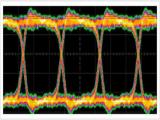
|
04/04/2022 - 08/04/2022
SO Instrumentation School VIII. Signal Integrity and Electromagnetic Compatibility in Electronic Devices Granada |

|
17/01/2022 - 22/01/2022
SO Instrumentation School VII. Metrology with PC-DMIS on a portable Romer Absolute Arms Granada |

|
14/03/2022 - 18/03/2022
English for Academic Purposes - an online workshop series for young researchers Granada |
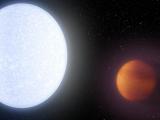
|
22/12/2021
Hallan oxígeno en la atmósfera del planeta extrasolar más caliente conocido Un equipo con participación del Instituto de Astrofísica de Andalucía (IAA-CSIC) publica el hallazgo de átomos de oxígeno en KELT-9b, la primera detección de este compuesto en una atmósfera exoplanetaria. |

|
22/12/2021
Captan distintos pulsos en la llamarada magnética gigante de una estrella de neutrones En apenas una décima de segundo, un magnetar -un tipo especialmente magnético de estrella de neutrones- liberó una energía equivalente a la que produce el Sol en cien mil años. Su estudio en detalle ha revelado múltiples pulsos en el pico de la erupción, que permitirán comprender estas aún poco conocidas llamaradas magnéticas gigantes |
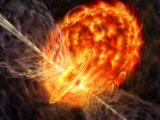
|
16/12/2021
El dramático baile final de las estrellas que comparten envoltura El Instituto de Astrofísica de Andalucía (IAA-CSIC) participa en el estudio de quince estrellas peculiares que han resultado ser estrellas dobles que, tras compartir envoltura, perdieron gran parte de su masa |
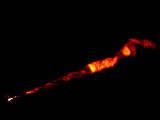
|
07/12/2021
Observan una estructura de doble hélice en el chorro que emana del agujero negro de la galaxia M87 Producido por el campo magnético, es la primera vez que se observa esta estructura a distancias tan lejanas del agujero negro. El Instituto de Astrofísica de Andalucía (IAA-CSIC) participa en el descubrimiento |
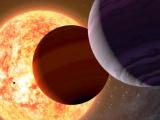
|
02/12/2021
Los planetas gigantes podrían alcanzar su madurez antes de lo esperado El Instituto de Astrofísica de Andalucía (IAA-CSIC) participa en el estudio de los planetas gigantes del sistema V1298 Tau, que en apenas veinte millones de años ya han alcanzado su tamaño final. El hallazgo ha sido posible gracias a medidas de velocidad radial de los espectrógrafos HARPS-N, en el Observatorio Roque de los Muchachos (ORM), y de CARMENES, en el Observatorio de Calar Alto (CAHA) |

|
01/12/2021
La investigadora Isabel Márquez y la Unidad de Cultura Científica del IAA-CSIC, premios "Granada Ciudad de la Ciencia y la Innovación" Estos galardones tienen por objetivo reconocer y divulgar la actividad científica en el ámbito de la ciudad de Granada a través de diferentes categorías. |

|
05/05/2022 - 12:30
Unexplored outflows in nearby low luminosity AGNs: the case of NGC 1052 NGC1052 is considered the prototype of AGN-LINERs, an AGN family at low-luminosity for which, so far, the role of outflows in their evolution has been studied the less. Thanks to MUSE and MEGARA IFS-cubes we found that the stars are distributed in a dynamically hot disc whereas the ionised gas is detected mostly in the polar direction up to 3.3 kpc. We found evidences evidence of an ionised gas outflow (jet-powered) propagating in a cocoon of... Dra. Sara Cazzoli |
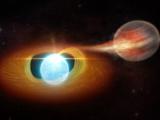
|
25/11/2021
En llamas y en proceso de ruptura por su compañera estelar Se halla un sistema formado por una estrella enana blanca y un objeto pequeño, posiblemente un planeta, tan próximos que el segundo es abrasado por la radiación de la estrella, haciendo que su atmósfera se evapore |

|
24/02/2022 - 12:30
SO Webloquio: Exploring the transient radio sky with the SKA and its precursors Radio astronomical observations probe particle acceleration in some of the most extreme environments in the Universe. For example, we can trace the relativistic jets produced by accreting black holes; observe flashes from hyper-magnetised neutron stars; and study the aftermath of stars that are ripped to shreds as they pass close to super-massive black holes. These events provide critical information about the extremes of the Universe, but they... Dr Jason Hessels |

|
27/01/2022 - 12:30
La IAU más cerca que nunca The International Astronomical Union (IAU) has more that 13000 members. Each country pays according to a table that has to do with the number of people belongin to the IAU. But the IAU is not only a club of members but has a number of activities that are open to every member. In particular the IAU run 9 Symposia per year with topics relevant to current astrophysics. On years where there are a General Assembly on top of the 9 Symposia the IAU... Dr. José Miguel Rodriguez Espinoza |

|
17/02/2022 - 12:30
The Africa Millimetre Telescope project - extending the EHT The Africa Millimetre Telescope (AMT) project led by the Radboud University and the University of Namibia aims to realise a new telescope on the Gamsberg mountain in Namibia to extend the existing network of telescopes that together form the EventHorizonTelescope (EHT). For the future of the EHT more independent nodes in the network are needed to increase the overal redundancy of the network and to improve the image quality and allow for time-... Dr. Marc Klein Wolt |